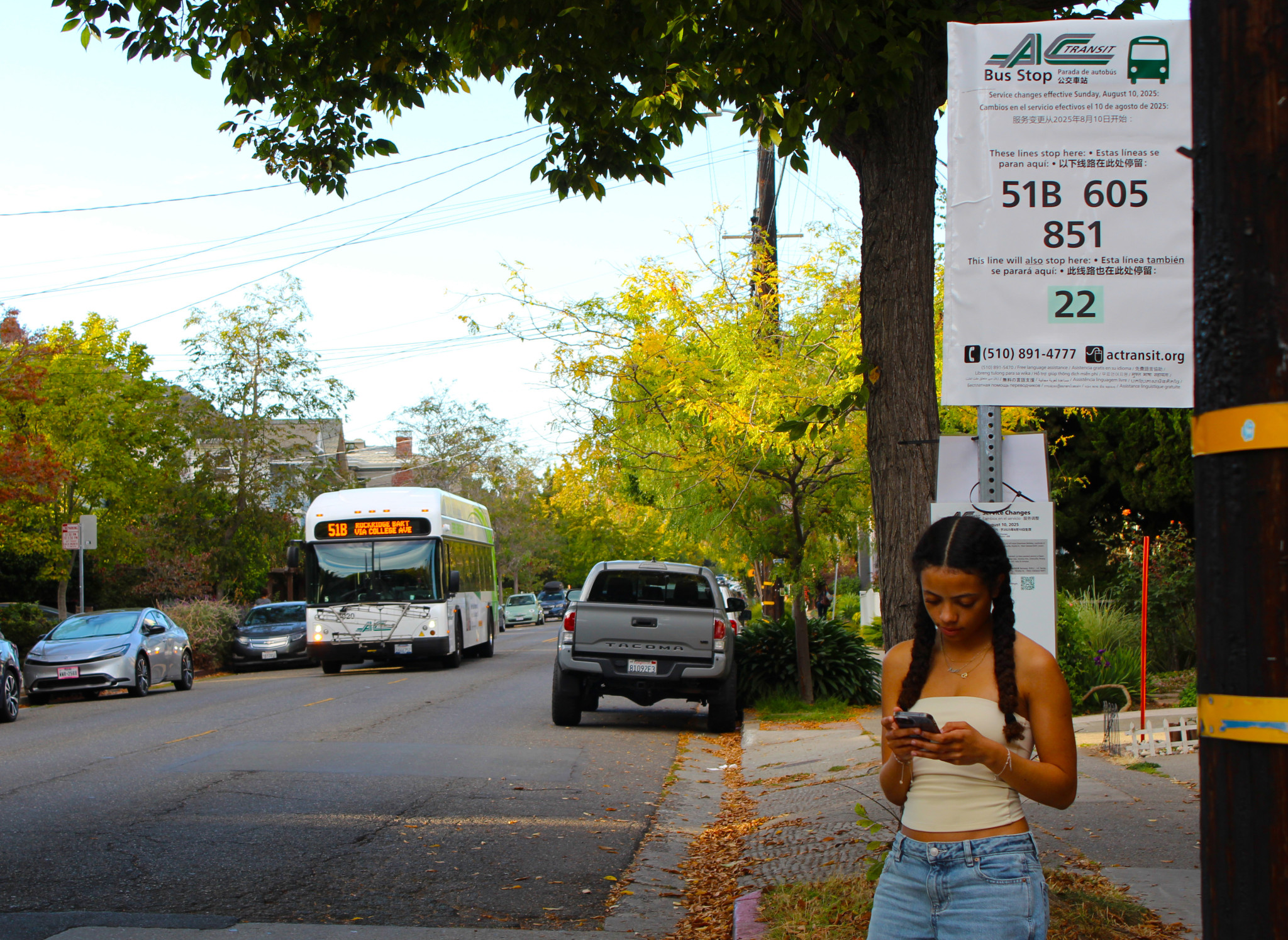Whether it's commuting to work, school, or anywhere in general, bus and train lines have been a convenient and economical way to get around for Berkeley residents. Alameda-Contra Costa (AC) Transit, a public transportation system based in Alameda County, has been relied on by students at Berkeley High School, especially since there are no school buses commuting students to and from school. Students that don't live within a walkable or bikeable distance, or don't have access to a ride to school, often rely heavily on public transportation.
The frequency and location of buses has been a major factor in students arriving at school on time. The convenience and accessibility of public buses to BHS has been noticeably reduced in the recent 2025-26 school year because of AC Transit's "Realign" plan. This harms students' academics by restricting the ability to arrive to class on time. Students without access to a car, or not able to get a ride, are already at a disadvantage when trying to get to school. Every student should have the same opportunities to learn and arrive at school on time. AC transit must stop cutting down on lines crucial to students commuting to high school.
The "Realign" plan was first introduced on Sunday, Aug. 10, 2025. Since the plan was enacted, 104 lines have been updated either through being redesigned, created, or cut. The network change was an effort to re- turn to pre-pandemic ride levels. The AC Transit team conducted public outreach as an attempt to optimize efficiency. The goal of the plan was to enhance schedules and reliability, but regard- less of the outreach, there's been a disconnect between the lines and needs of riders. Several reliable routes have been cut due to the "Re- align" plan. Lines such as the 33 and 79, 10, 46, and 72R are a few of the many cut or removed from the map. These lines were seen as a dependable way to get to school, but have now be- come noticeably unreliable. According to AC Transit's website, transit lines have decreased from 130 to 123 total lines.
Not only do the changed bus lines inconvenience students, but the frequency of some bus lines have decreased. One of the most affected areas in Berkeley when considering the com- mute to school is North Berkeley and the Berkeley hills. "There's one bus that gets you there 25 minutes early to school, which you don't want to be, and then the other one just gets you there five minutes late," Ines Labiano, a freshman at BHS, said. The decreased frequency—a change due to the realignment often makes students either unreasonably early to school, or tardy to classes.
Because the buses don't come as often as they used to, some find they are filled up with students trying to get to school on time. "I've also noticed that if you're trying to get to school at 8:30 a.m. from where I live, the 18 and the 7, which a lot of students take, haven't been running as often," Lucinda MacLane, a BHS junior, said. The bus cuts unfairly affect students' ability to be on time to school. "I've talked to a lot of my other friends who live in a similar area, and the same thing has happened to them," MacLane said. For some BHS students, these bus cuts aren't just minor changes, they are directly affecting learning by making students late to school. Reliable transportation is more than a way to get around; it's ensuring students have the same opportunity to get to school despite their neighborhood and access to another mode of transportation. If AC Transit wants to remain a reliable option for students, it must recognize that some of their most frequent riders are students, and restore the routes and schedules that make commuting to school on time possible.





